► BYD Seal driven in the UK in both guises
► Up to 354 claimed miles of range
► LFP Blade battery pack maximises interior space
Pity any new car maker that wants to pitch up and place its tanks on the lawns of the European and US blue bloods. Making waves is so hard to do for a newcomer – but as Tesla has proved, the changing world we live in makes it more than possible. All you need to do is offer something genuinely new, useful and desirable.
WANT TO WIN £5000? ENTER CAR’S BYD PRIZE DRAW NOW!
BYD – the biggest automotive brand many Westerners have never heard of (all you need to know about BYD here) – is hoping it can ‘do a Tesla’. It’s well-established in China and sells in huge numbers globally, but it is now pushing west with a high-tech, innovative, and good value range of EVs. It’s hoping to grab a slice of carbuyers’ newfound ability to cross-shop into less conventional brands – with the Seal acting as a halo product to tempt people in the way the Hyundai Ioniq 5 and Kia EV6 have done elsewhere.
So it’s entirely logical that its newest and most impressive EV – the Seal – is packing technology that significantly moves on the electric car game. Although you might be forgiven for thinking that when you take a look at it in the metal for the very first time. It has definite shades of Porsche Taycan about the headlights and front end, with a bit of Mk1 Renault Laguna around the rear three-quarters thrown in for good measure. But the shape’s halfway between the smooth curves of a Tesla Model 3 and a Hyundai Ioniq 6, and it’s packing a drag coefficient 0.219Cd.
BYD Seal review 2024: the slickest Chinese EV yet?
It’s a handsome, almost generic, effort that you’d come to expect from the team of Wolfgang Egger, BYD’s global design director, formerly of Audi’s parish. But dig into Egger’s CV and the Seal’s modestly good looks (and lack of a faux grille) make more sense. He started out at Alfa Romeo where his fingerprints made it on to the achingly attractive Alfa Romeo 8C Competizione 8C and 156 and 166 saloons before moving to Volkswagen Group via Lancia.
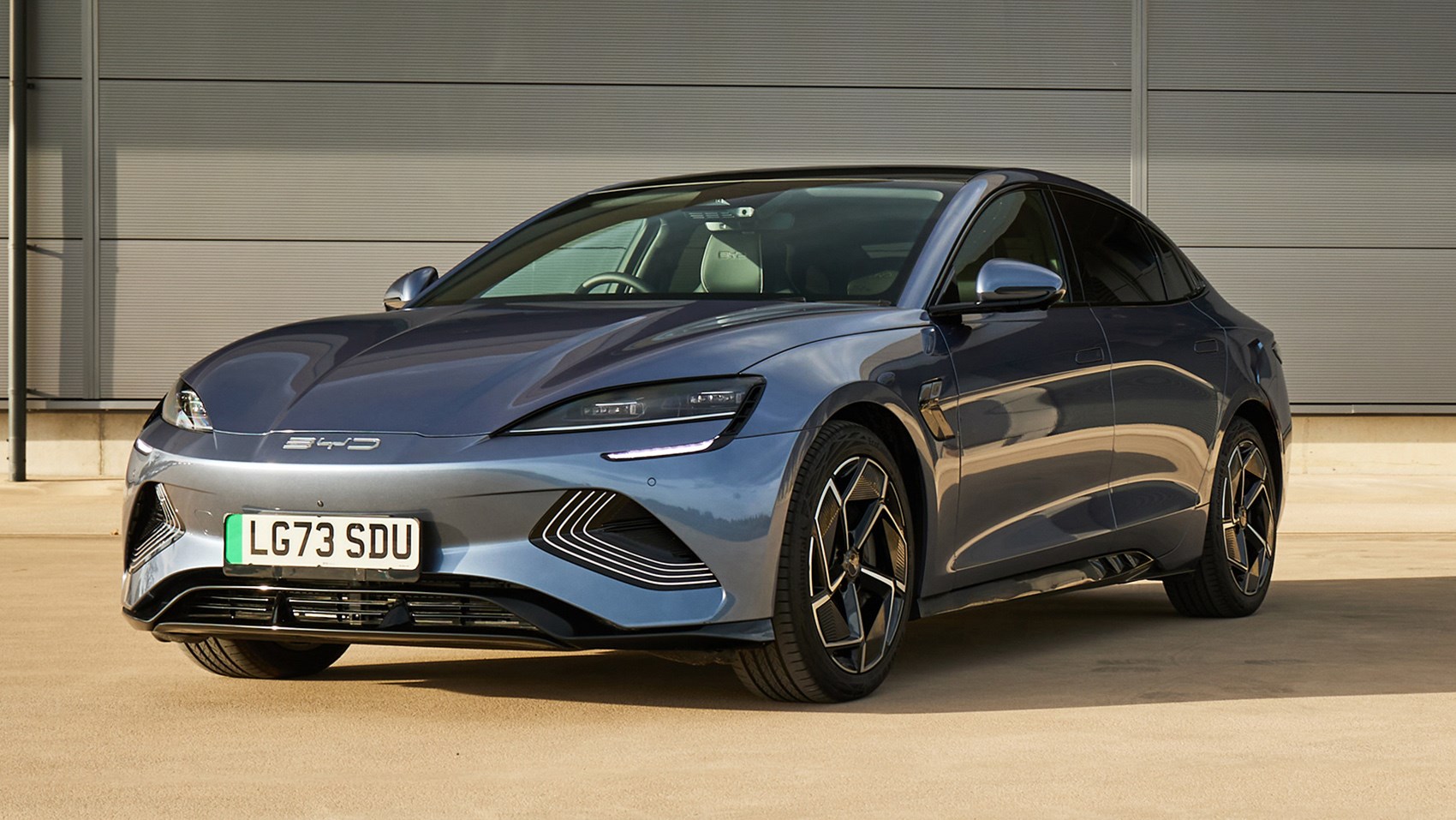
So, it’s likely to make quite a splash based on looks and tech alone. The Seal joins BYD’s European product offensive at a good time and and acts as a flagship to sit above the Atto 3 SUV and Dolphin hatchback. That’s three new EVs in one year, but the firm won’t be leaving it at that.
For now, though, the Seal lands in the middle of an almighty battle for honours in the D-segment electric saloon car market. Right now – in terms of sales – that’s dominated by the improved Tesla Model 3 Highland, but the BMW i4, Polestar 2 and Hyundai Ioniq 6 are all jockeying for a slice of that juicy pie. The good news is that the BYD Seal able to comfortably swim in that pack, acquiting itself very well on the road.
Just how well… read on.
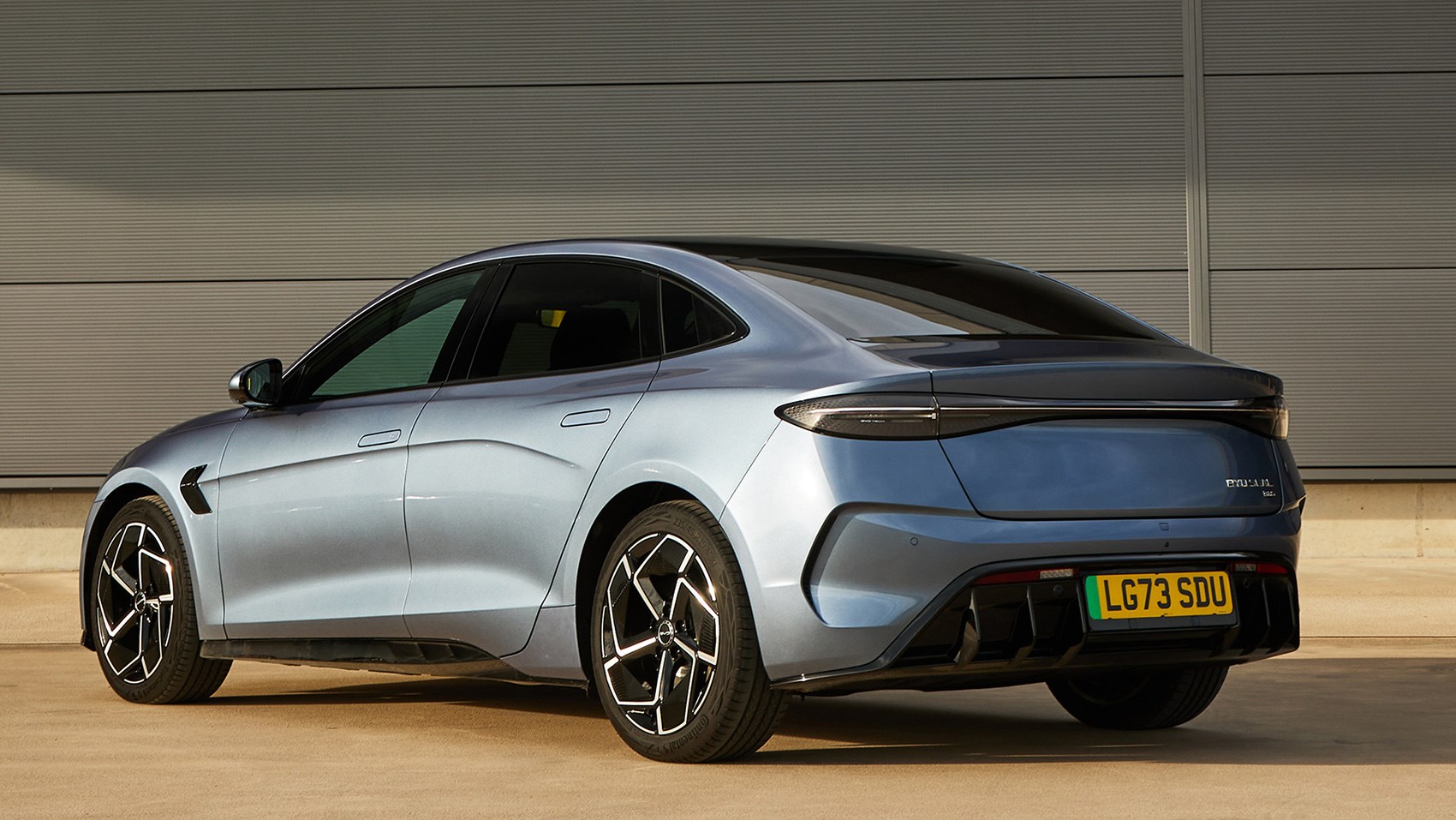
BYD Seal: battery, motors, range and charging
The BYD group manufactures almost all of the Seal in-house, including the batteries, motor units and even the semiconductors, so it’s more or less immune to supply chain issues and should mean customers only have to wait a matter of weeks for a factory order rather than the months some manufacturers demand. In the current climate, this is likely to play well for buyers who are happy to cross-shop their brands, and are happy to try something new.
Under the skin is BYD’s e-Platform 3.0, a scalable platform that also underpins the Atto 3 and the Dolphin. Here, though, the 82kWh lithium-ion phosphate (LFP) ‘Blade’ battery is totally structural, the top cover of the battery pack being the body floor.
What’s special about BYD battery tech? Read CAR’s overview here
That gives the monocoque excellent torsional rigidity (40,500Nm/deg compared with an industry average of around 25,000) and a lower floor than its rivals for more effective interior packaging and a better seating position. It’s a battery technology that’s proven to be safer and less fussy about charging over the longer term – are you listening, insurers?

The Seal is available with two motor options. There’s a 308bhp single-motor rear-wheel drive variant, known as the Design. It’s capable of 354 miles on a full battery on the WLTP testing cycle and the 0-62mph time is 5.9 seconds. That’s longer and quicker than a base-spec Tesla Model 3, for reference, and more than quick enough for most tastes.
The range-topping dual-motor, AWD model, called the Excellence, makes 523bhp and has a claimed range of 323 miles. Slightly more powerful than a Tesla Model 3, the American contender does beat the BYD to 62mph by around 0.5 seconds and has a little more range. But BYD is so happy with its 3.8 second 0-62mph time, that you’ll find it’s flagged as the BYD Seal 3.8S on the bootlid.
At the chargers, it performs well, if not at the leading edge. Maximum charge rates are more impressive than the Atto 3 or the Dolphin, and the Seal will top up at a middling 150kW from a suitably powerful charger. On a two-phase AC supply, it’ll charge at up to 11kW. That won’t trouble an Ioniq 6’s charge rate, but is more than fast enough (for now) for the UK’s public network.

What’s it like to drive?
We’ve driven the Seal on road and track in the UK and the news is good on the dynamic front. We tested both forms of the Seal on a Spanish test circuit – a slalom course as well as a drag strip to show off the acceleration of the Excellence AWD – and on a mixture of urban, shoddy UK rural and motorways in Germany.
On the circuit, the Seal impresses with plenty of punch, direct steering with a quick rack, and a general sense of agility. It’s not physics-busting in the way a BMW i4 is, but tidy handling, good response, and excellent body control in general.
Brakes, too, are consistent and offer excellent stopping power, even if a couple of examples we tried had softer brake response than we would have expected.
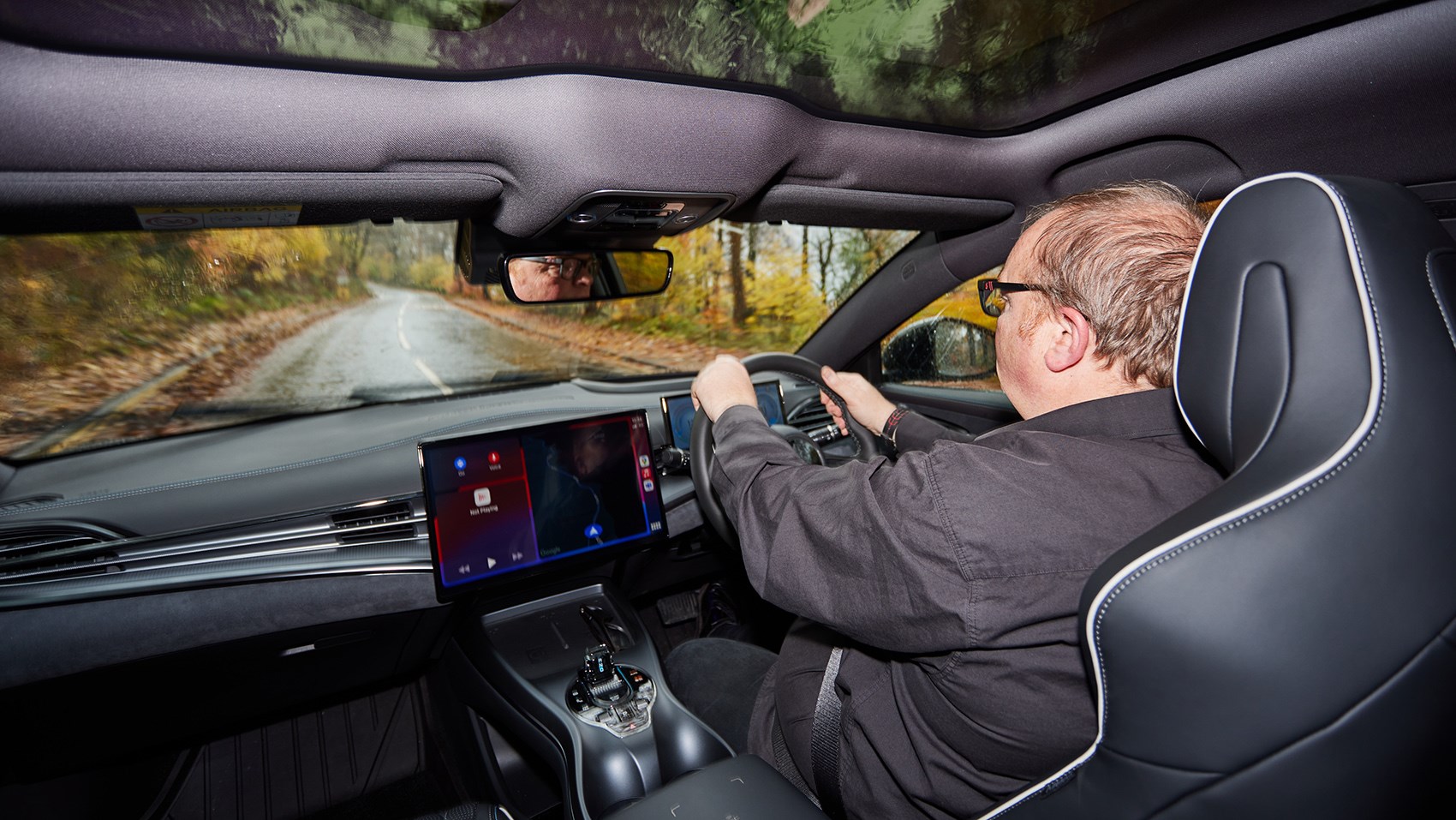
Out on the public roads, there was more opportunity to delve deeper. There are several drive modes to choose from, but we limited ourselves to Normal and Sport, as most drivers aren’t likely to get too experimental with their Seal wranglings.
Starting out in the more powerful 523bhp Excellence and regardless of drive mode, throttle response is almost aggressive. But it’s progressive enough for quick acclimatisation, and soon you’ll be delving into its performance without feeling the need to constantly exploit it.
Take up is smooth and accompanied by a unobtrusive EV hum, and motorway cruising is hushed thanks to effective sealing and double glazing.
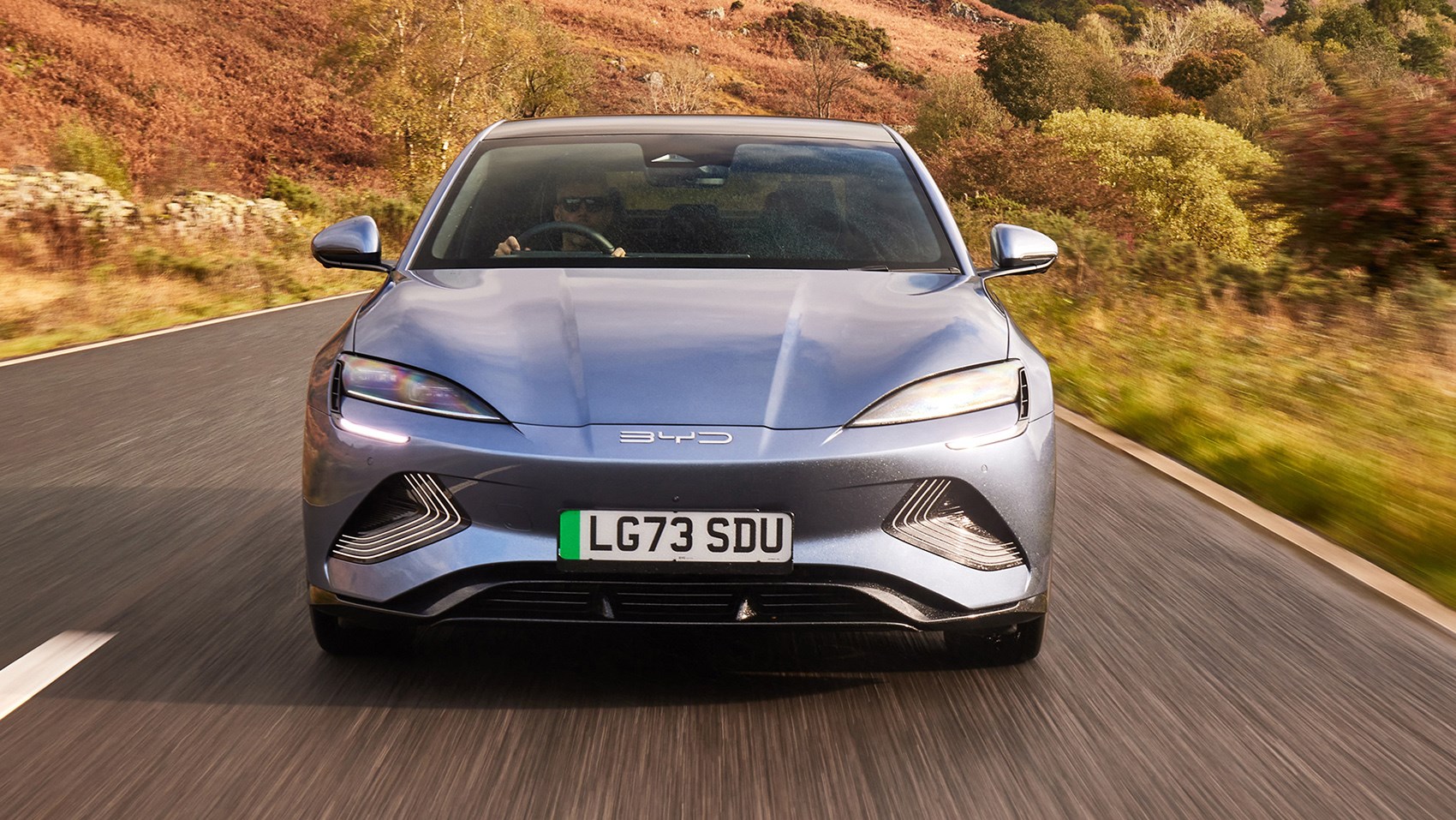
However, if standing starts are your thing, then the Excellence model delivers. That 3.8 second 0-62mph time can be repeated ad nauseum. Two demonstration Seals on the drag strip had already had repeated full-bore acceleration tests at least 20 times by the time we climbed in, yet performance was unchanged. Try that in a Tesla Model 3 – you’ll get a quicker launch, twice, and then it could overheat.
Seal electric lap record! Watch CAR’s video here
Get it away from the drag strip, and the Seal is even more impressive. Steering is quick and well-weighted, although in Sport mode, it’s probably a little too direct for most tastes. Dial it back to Normal mode and it’s still on the sharper side of normal with quite aggressive response around the straight ahead. Good thing, too, as in corners it feels neutral, turning-in responsively and with low levels of body roll to contend with.
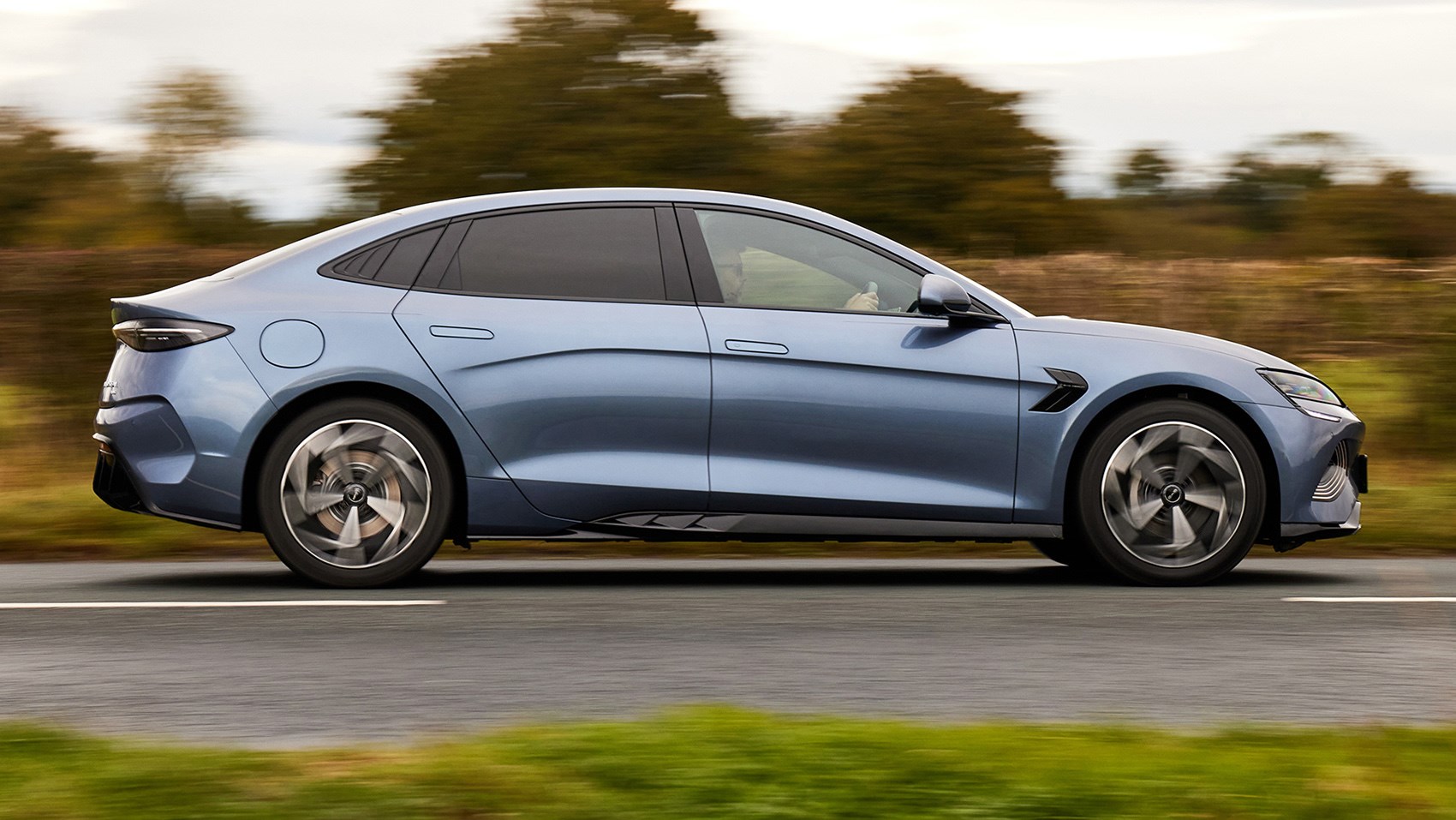
There are no steering wheel-mounted paddle controls, and any adjustments to regen are done within the settings menu – a shame because this can be a very useful feature. On a rain-affected test drive, it never felt anything other than confidence inspiring.
Ride quality, is on the sporting side of comfortable. It’s very compliant and seems suited to UK roads, even if those who like a softer experience might be disappointed by some patter on irregular road surfaces. However, we noticed than the ‘semi active’ system in the Excellence model suffered from a little too much of this, failing to settle down fully at certain speeds.
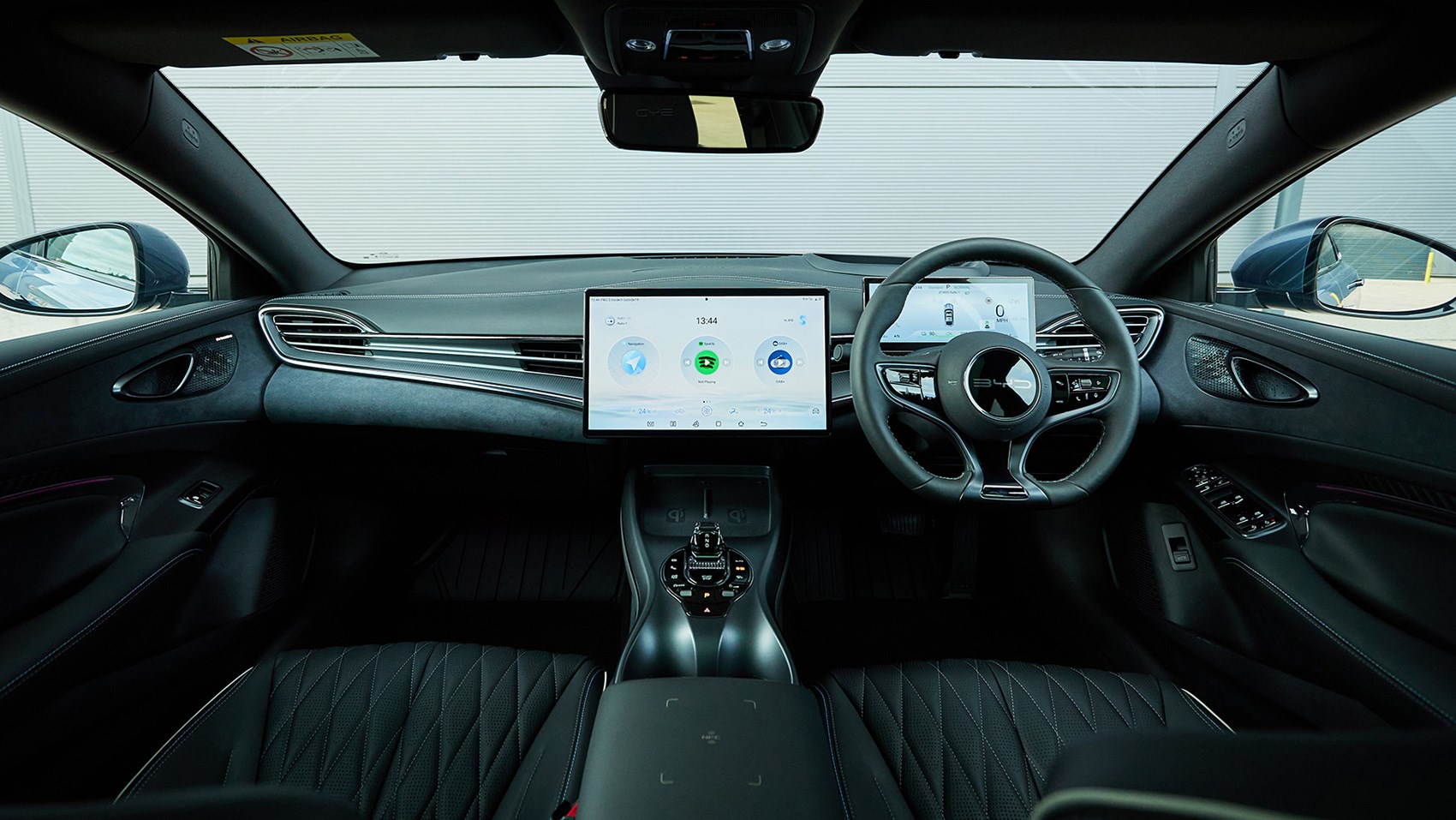
What’s it like inside?
The Seal’s cabin is dominated by BYD’s 15.6-inch touchscreen infotainment system, complete with pirouetting party piece as it switches from portrait to landscape at the touch of a button. It works less well here than it does in taller vehicles, honestly, but still has its uses for those who appreciate a long forward view on their sat-nav. However, in portrait mode, there’s a bit of a letterbox effect as it gets uncomfortably close to the rear-view mirror.
The system itself is fast and easy to use, and a model of simplicity and restrained design. The rest of the interior is also largely very successful. It feels suitably premium – moreso than the minimalist Model 3, actually – with a more inviting aesthetic and some very nice-looking trim materials. These including a very tactile flavour of suede, which lines the dash and door cards.
But that extends throughout the entire cabin – everything you touch is swathed in either soft-touch plastic, suede or vegan leather, and the switchgear mostly feels good, though the crystalline gear selector is a little gauche, and the door pulls and column stalks feel disappointly plasticky.
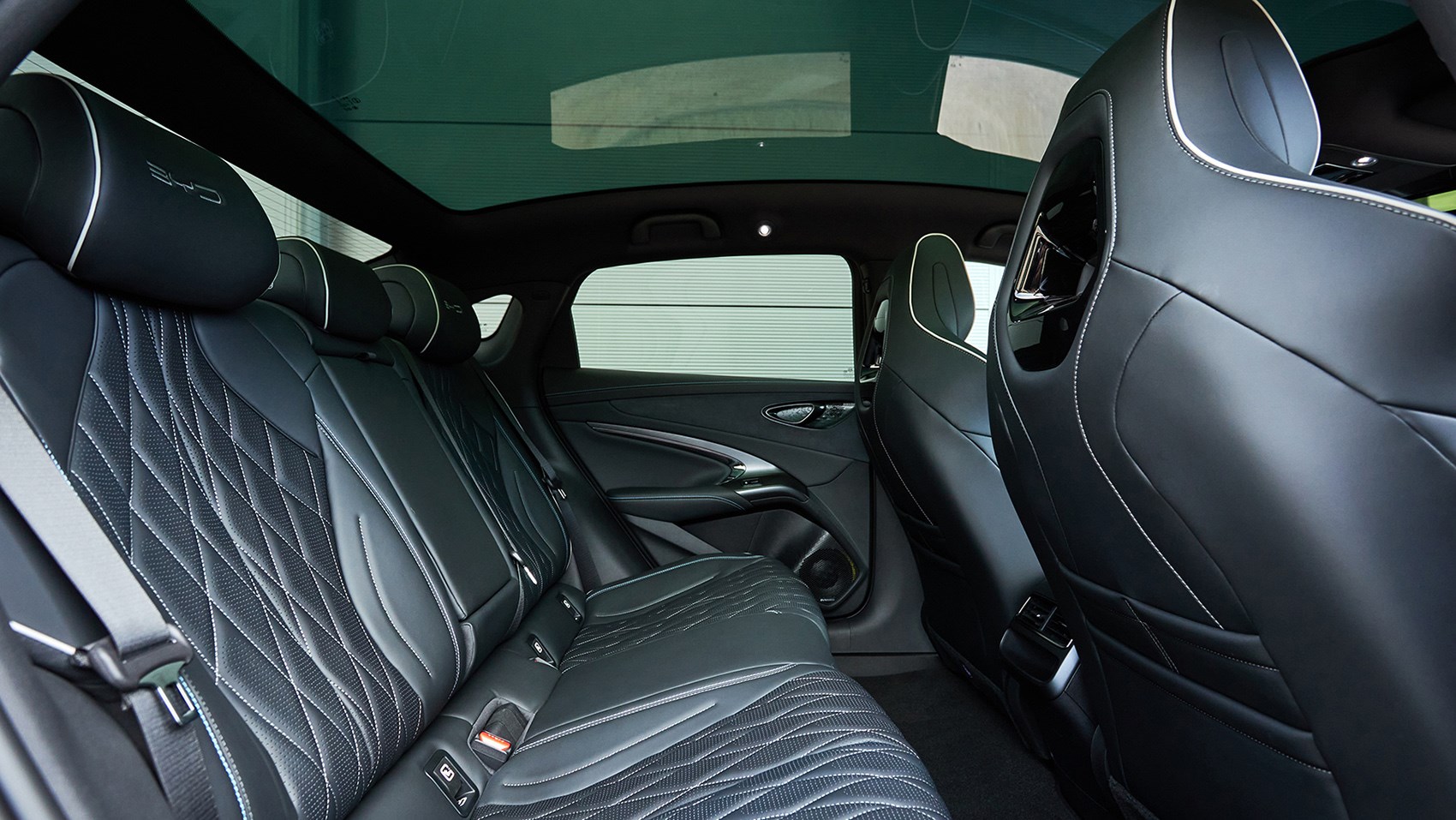
The seats are well shaped, nicely trimmed and they look good. They offer an interesting mix of softness and support, although some might find the boldly ‘BYD’-embossed headrests a little tacky.
Practicality is where the Seal scores well, thanks to that compact blade battery taking less space beneath your feet than rivals’ less space-efficient power packs. There’s loads of legroom up front, as well as for rear passengers, where it easily matches the Model 3, and pulls clear of the Polestar 2.
Headroom isn’t quite as generous due to the plunging roofline back there, though, but it could have been worse, with the vast (non-opening) panoramic glass roof clawing back that all-important inch or two. Finally, a nice flat floor means there’s a lot of footroom in the rear, although disappointingly, you can’t tuck your feet very far under the front seats.
Boot space is an okay-ish 402 litres, with a similarly narrow loading aperture to the Model 3. We’d have preferred a hatchback, of course, and wonder why this fastback design couldn’t wasn’t conceived that way. There is a 53-litre lidded ‘frunk’ that should make tidying up charging cables a little easier, though.
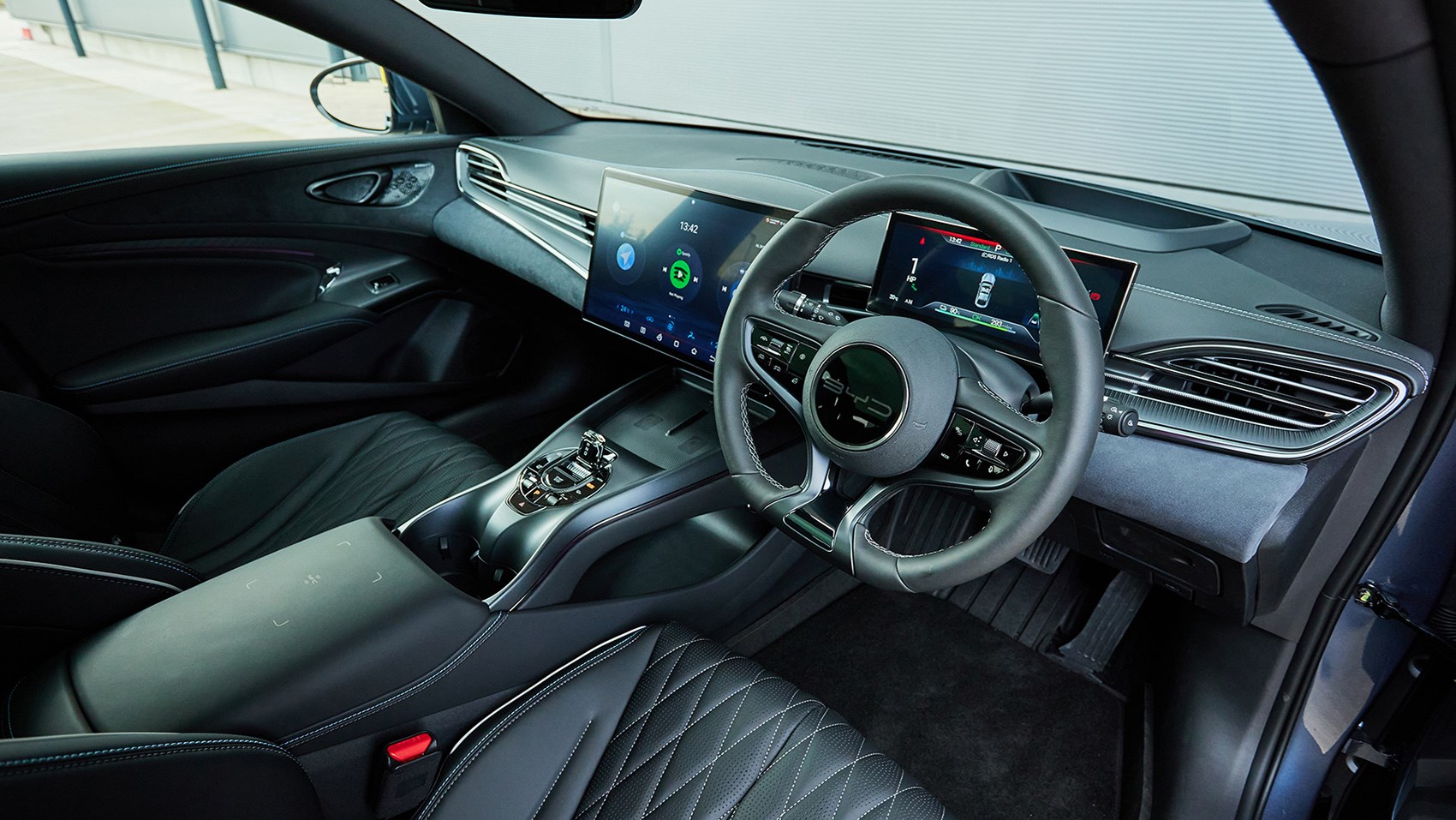
When can I buy one?
The Seal launched in the UK towards the end of 2023 and comes in the aforementioned two versions. This will be followed by a smaller-battery version in 2024, which should bring the entry price down further.
Speaking of which, the Seal is priced slightly below the equivalent Tesla, although because there is no entry-level version as yet, it relies on similar performance but glitzier specs to justify its £45k starting price. However, the jump to the AWD Excellence model isn’t huge, and well worth the small uplift.
Speaking of which, BYD has published PCP and PCH finance figures for the car, and currently, they’re around the same level as the BMW i4 and someway above the Model 3. Expect those to head south, as the car becomes more familiar in the UK.
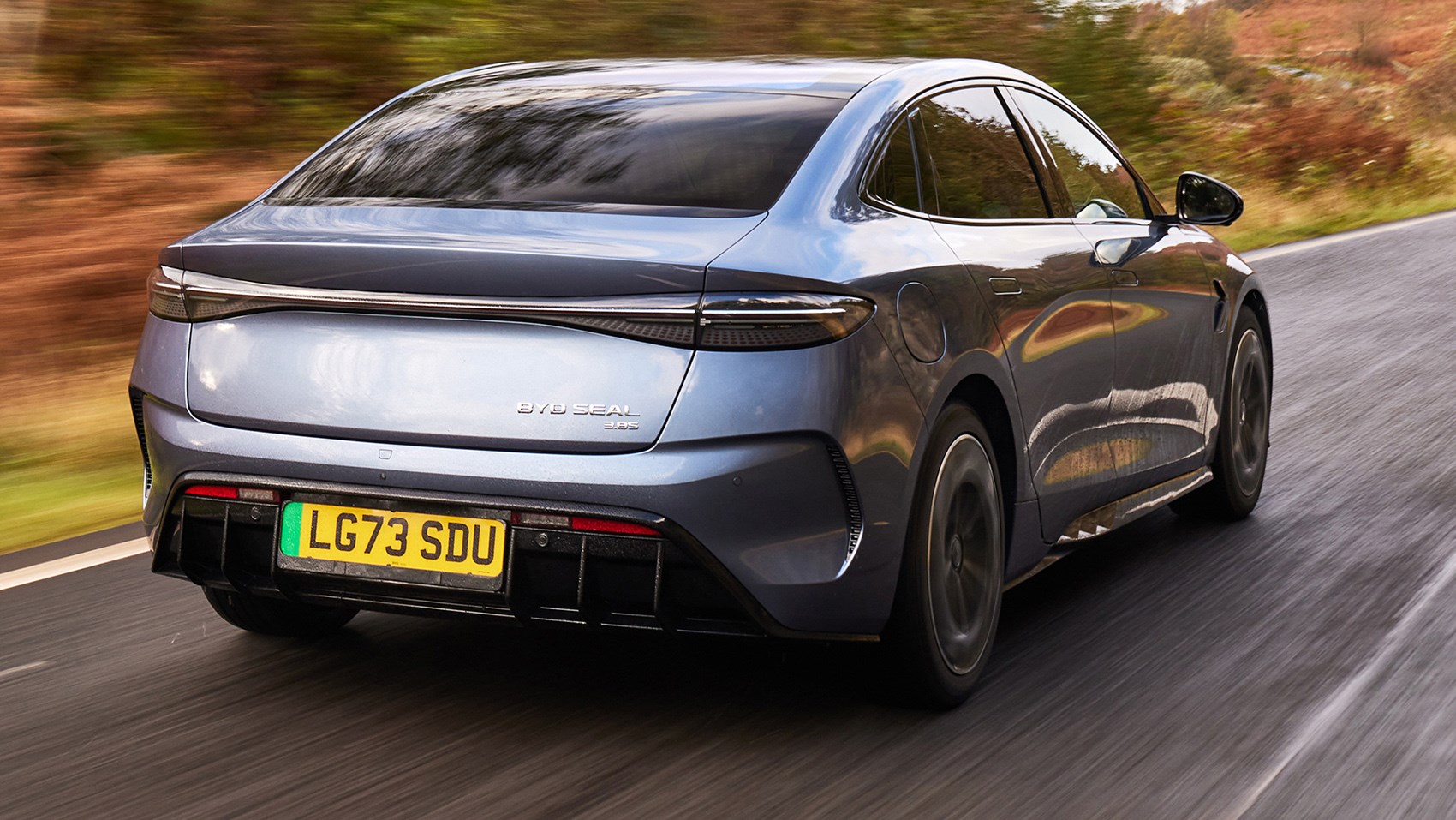
Verdict
It’s a very impressive package, balancing efficiency, performance, good looks and generous equipment levels very well indeed. Dynamically, it’s impressive, with incisive steering and sharp handling – and a firm suspension set-up that will appeal to sportier drivers.
The Design makes a lot of sense. It’s cheaper, doesn’t feel that much slower on the road, goes about 20 miles further on a charge and also rides with a little more consistency. However, given that on current finance figures, there’s only £20 or so per month between them, so the added performance and equipment of the Excellence are well worth it.
Want more? Read CAR’s BYD Seal road trip through the Cotswolds
A lot depends on the dealer back-up, though. Also important is how they treat their customers while the network grows, but if BYD gets this right, while continuing to offer the super-short lead times it offers with the Atto 3, then the Seal looks very tempting. In an era where brand loyalty melts away as buyers become increasingly comfortable in an era of start-ups, recommending BYD’s bold new sports saloon doesn’t look as daft as it might have done 10, even five, years ago.
As it stands, it’s a convincing proposition against a Model 3, Polestar 2, BMW i4 or Ioniq 6. It’s more reponsive than the Hyundai, roomier than the Polestar and feels more luxurious than the Tesla. But the early signs are there, and the rest of the car looks very good indeed. That is quite a reflection of the astonishing pace the Chinese motor industry has moved towards a dominant position in the electric car market.
Specifications for the Excellence version